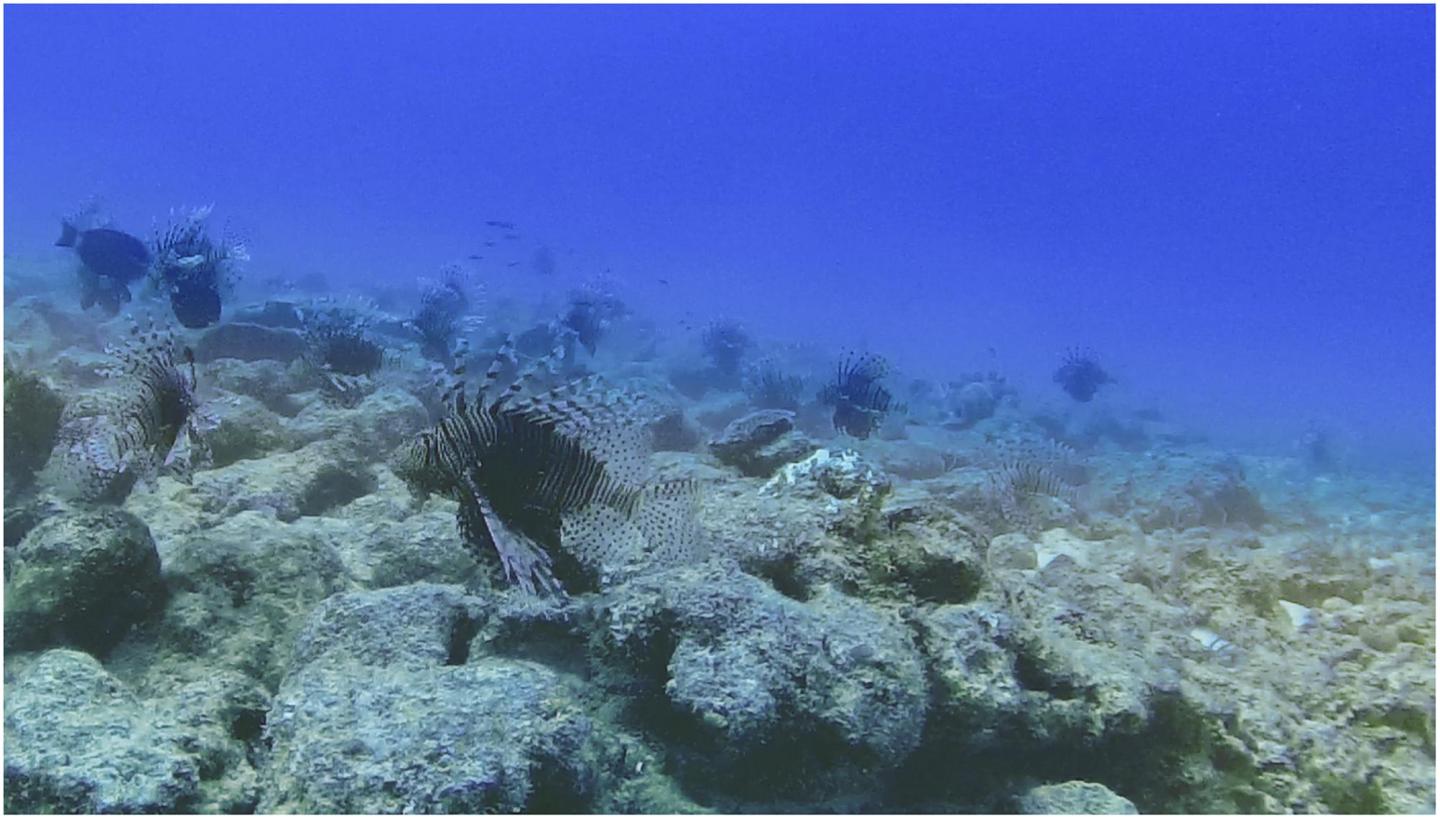New research reveals that ecological factors influences the distribution of lionfish on deep reefs

Credit: Alex Chequer
Invasive lionfish (Pterois volitans and P. miles) are now ubiquitous throughout the Caribbean and Western Atlantic on both shallow and deep reefs. While many invasive species disrupt natural ecosystems by spreading disease or competing for food and habitat, lionfish are particularly problematic owing to their voracious appetites and high reproductive capacities.
Lionfish are indiscriminate predators, feeding on over 70 species of fish, invertebrates, and mollusks, and a single lionfish can eat 30 times its stomach volume in one meal. Additionally, each female lionfish can produce more than two million eggs each year during her average 16-year lifespan, making lionfish a significant threat to native fishes and reef systems.
Recent surveys in Bermuda have revealed dense aggregations of lionfish on mesophotic reefs (located at depths between 100 and 500 feet, or 30 to 150 meters), yet these densities are not consistent across reefs at this depth. Newly published research in the journal Frontiers, led by BIOS reef ecologist Gretchen Goodbody-Gringley, examines how lionfish distribution on mesophotic reefs may be affected by ecological factors, such as the abundance of prey organisms, as well as environmental factors, such as water temperature.
The research team, which included scientists from the University of Massachusetts at Dartmouth, the Bermuda Department of Environmental and Natural Resources, and the Bermuda Natural History Museum, used diver-led visual surveys to investigate 11 sites at a depth of 196 feet (60 meters). During the surveys, divers recorded numbers of both lionfish and prey fish, as well as the size class of individual prey fish and the bottom temperature.
High densities of lionfish were recorded in areas with higher abundances of prey fish–specifically the creole fish (Paranthias furcifer), which is a preferred prey among lionfish–and higher prey fish biomass. However, the influence of seawater temperature was found to have the strongest effect on lionfish distribution, where higher lionfish densities were found at sites with lower bottom temperature.
Lower temperatures also were correlated with higher densities of prey fish, prey fish biomass, and P.furcifer biomass, implying that physical factors in the environment (such as temperature) likely influence the ecology of the same area. These results suggest that cold-water upwelling currents may be fueling the food chain in certain locations, resulting in high abundances of prey fish and, thus, lionfish.
“Understanding why high densities of lionfish occur in specific locations will aid the ability of scientists and managers to identify and target areas for lionfish control efforts, thereby increasing the efficacy of future management,” Goodbody-Gringley said.
###
Media Contact
Gretchen Goodbody-Gringley
[email protected]
Original Source
http://www.
Related Journal Article
http://dx.




